We had earlier been told that the tourist lodge in Tawang was booked full and we could only get a room if there were any cancellations. Still, we decided to test our luck and walked up to the lodge, a short distance up old bazaar. Luckily for us, we did get a room! The caretaker was apprehensive and was telling us that the rooms were not that great, little did she know about where we had lived in the past one month. The room had two beds, razais and a geyser in the bathroom – this was luxury! As we had arrived in the afternoon and the sun was still out, we quickly got out to explore the place and also to have our lunch. We were surprised that most of the shops in the market were closed. On asking a shopkeeper, we got to know that Monday is the closing day for the market here. When told that we wanted to have lunch, he came with us and showed a nearby restaurant. This was one thing we saw happening again and again in Arunachal – the locals go out of the way to help you. We enquired a little bit on what we could do in Arunachal and roamed the markets a little bit. As in other towns of the North East, the people retire early and so did we.
When we landed in Tawang, we were really happy to see the sun shining bright. It still was a little cold, but the bright sun lifted our spirits. When we woke up the next day however, the whole mountain was covered in a heavy cloud. However, we braved on to our first stop – the Tawang Gompa. Tawang is the birth place of the 6th Dalai Lama – the religious leader of the Buddhists and Tawang was also the place where the 14th Dalai Lama crossed over to India more than 50 years ago. It is apt that it has the biggest monastery in the world. The Gompa is a huge complex – schools, a museum, prayer halls, center for religious and cultural studies are all located inside the monastery complex. We were lucky to witness a small procession of the Lamas as we entered the gates of the monastery.
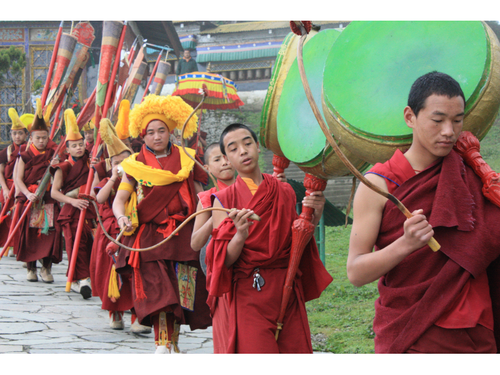
The clouds which had come down upon Tawang had not yet cleared and we were left wanting with a view of the Ani Gompas. Background – Buddhist monks are generally male and they do not marry. It is a practice among Buddhist families to give one male child to the monastery at a young age and are educated in the religious texts at the monastery itself. However, there are female monks too, called Anis. They become nuns voluntarily. There are three Ani Gompas in Tawang and it our plan was to hike along the hills to them from the main Gompa. We had been tipped of this trek by Phejin – our friend in Nagaland, who had done in a couple of weeks earlier with some tourists. We asked for directions and were pointed to a narrow dirttrack going down the hill near the main Gompa. We had made a new friend at the Gompa – a student from N.I.T Silchar who had completed his engineering course and was roaming before joining his job. Off we went along the trail – it was quite slippery at some places and our running shoes weren’t a lot of help. We were worried about leaches and were doubly careful while walking. On the way, we found a roaring waterfall which was just as beautiful as Phejin had described on the phone!
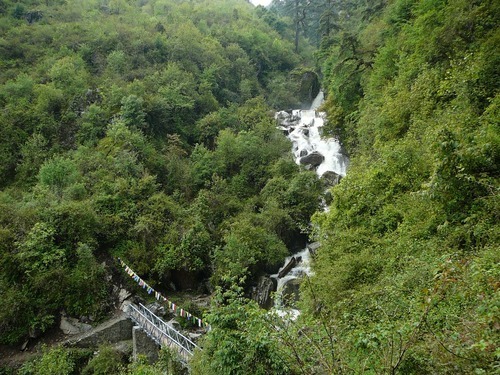
After a longish photo session there, we started climbing uphill to the meadows we had seen earlier on the way to the main monastery. A meadow on the top of a hill with cows grazing peacefully – an idyllic scenery. We went exploring to the peaks at the edge of the hill and then set about pitching our tents!The location was picture perfect for a night of camping.
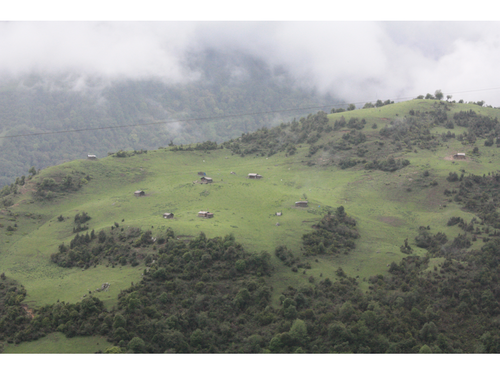
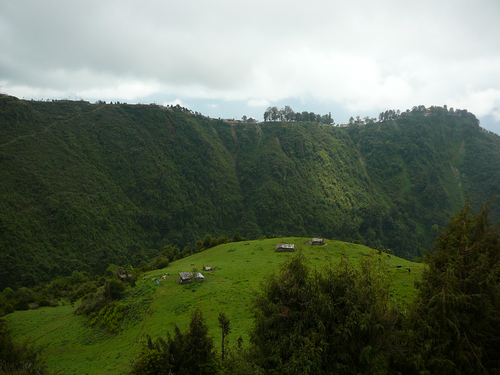
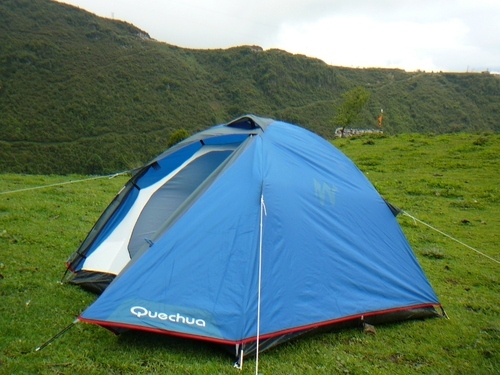
However, our joy was short-lived as a few locals there warned us against camping as the seemingly peaceful cows were only half domesticated and by 4pm the whole meadow would be full of them. With a heavy heart, we packed our tents and went on our way to the Ani Gompa.
We had earlier seen a diversion in the trail to the meadow and had guessed that this was the way to the Ani Gompa. We backtracked to this point and took the diversion – big mistake. After we went on for a short while, we found that the trail divided again. This kept happening and we kept going on till the time we were quite lost. Now, we were on the same hill as the Gompa and we could see it too, but going further was getting harder and harder because of the thick brush. It was already late afternoon and would get dark soon too. We decided we would push it through the brush anyhow and kept going. Those couple of hours were quite enervating – there was no proper trail and we were climbing at a very high altitude. We did finally get to the Ani Gompa however – with some clothes torn and a few scratches. The Anis at the Gompa had some kind of a prayer going on and we were hanging around outside, reluctant to go inside and disturb them. Seeing us, some of the younger Anis called us to their kitchen to have some tea. They told us that the prayers would go on until evening anyway. So we had some of the famous butter (made from Yak’s milk) tea and made told them about what we were doing there. Contrary to the reports we had read earlier about the Butter Tea, the one we had was not smelly. It was a little bland though.
In the Ani Gompa kitchen

The Ani Gompa we went to
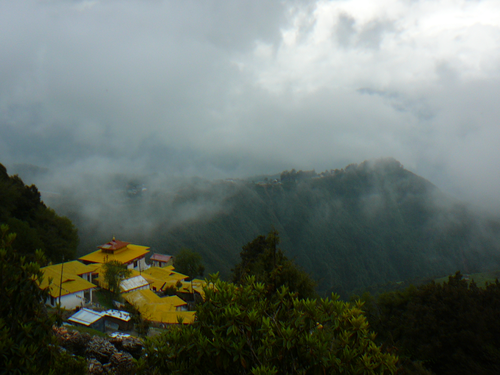
The Gompa we missed because of the all encompassing mist
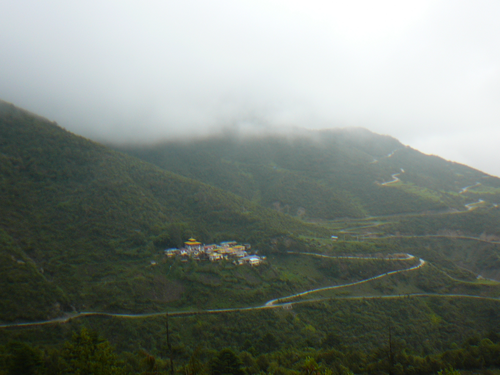
We enquired and found that there was the road to Tawang was further up the hill. The distance was nearly 12km and it would not be possible to get any rides without booking a cab beforehand. After the tiring trek, this was not such great news. However, we braved on and got to the road. We saw an empty van parked there and that raised our spirits –maybe we could hitch a ride. We looked for the driver who we suspected we had passed on the way up from the Ani Gompa, but to no avail. We had no other option but to start walking and hope to get to the town before it got too cold. We got talking to a couple of locals on a motorcycle and they told us that there was another Ani Gompa on the way to Tawang. As we kept going, the clouds came down upon us again; we missed the road to the second Ani Gompa entirely! We walked a few km, asked rides from Army jeeps but got turned down but finally got a cab going to Tawang. A tame ending to an otherwise exciting day.